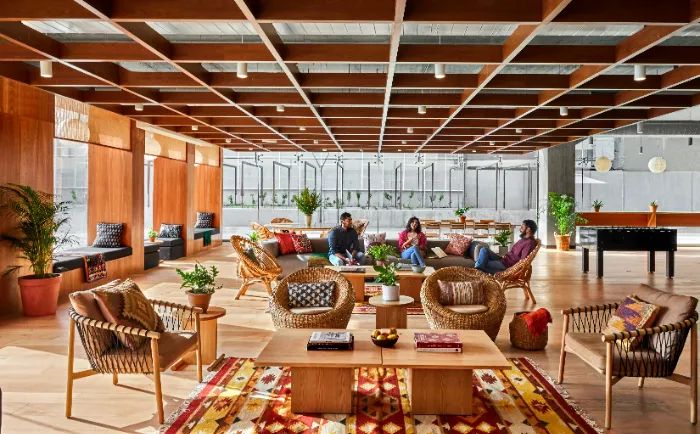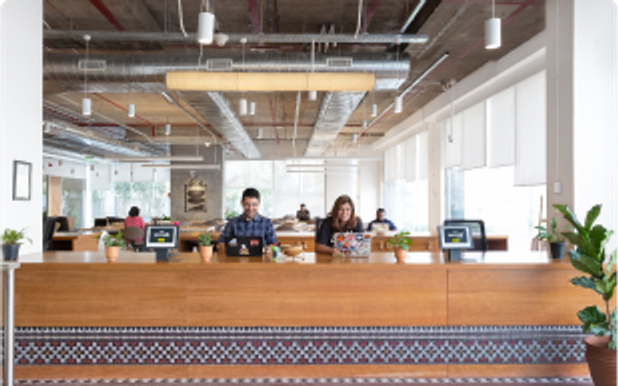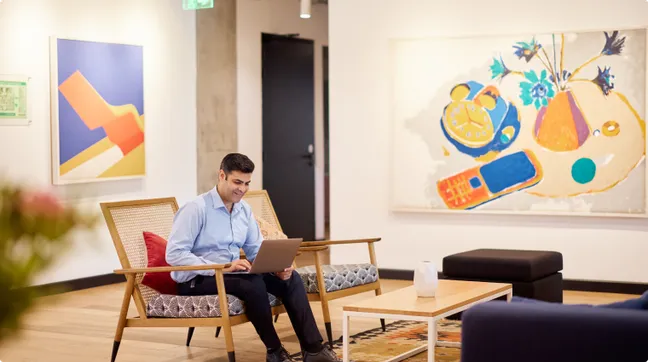WORKSPACE SOLUTIONS
How Flexible Workspaces can meet the demands of today and tomorrow

By utilising space optimally, organisations can address concerns around costs, productivity, occupancy, operations and processes
A workspace is not just about the work. It is also about providing employees a space that allows them the freedom to work where, when, and how they want. Flexibility in a workspace means that a conference room isn’t just a room for occasional meetings but one that can serve as a space for teams to huddle or an employee to work in a silo if required. By utilising space optimally, organisations can meet the challenges of the workforce today as well as concerns around costs, occupancy, operations and processes.
Most contemporary offices are adopting flexible working options and incorporating changes in design and layout to foster a culture that enables employees to be the best versions of themselves. The basic premise behind setting up a flexible workspace is to ensure that it supports employees with their dynamic needs, a space that is equipped to provide them the ability to carry out tasks in a manner that does not inhibit their productivity, whether in a group or in private.
As daily tasks change and evolve, organisations can incorporate flexibility in their offices through an optimum utilisation of space in terms of desking options, seating structures, furniture and technology. This can further have a direct impact on employee productivity, well-being, retention and business output.
Here are some of the hallmarks of a flexible workspace:
Space design counts
Workspace design is directly correlated with flexibility. The architecture and design of a workspace will determine how it can accommodate small spaces for fewer employees as well as larger hubs or work zones that are easily accessible. An open plan layout allows for a sense of structure by removing any walls or physical barriers, thereby efficiently accommodating a larger number of people. Not only is it cost-effective but also creates an uninterrupted sense of collaboration among inter- and intra-department employees. Easy reconfiguration keeping in mind social distancing is an added advantage that allows organisations to ensure the safety of their workers as they return to office.
Collaboration hubs
Ambient noise has always been a con associated with open plan flexible layouts. However, creating an activity-based layout for an open plan that is agile and responds to different workspace needs can combat this. A sub-divided office, with both collaborative and private spaces, provide employees with the opportunity to work in a surrounding that suits their needs. These hubs can be of any size and set up anywhere in a building, whether it is an open-space, a quiet corner or a sound-proofed room. Lounges and recreational areas also serve as spaces where employees can unwind and relax, while kitchens and pantries are more apt for socialisation or quick breaks.
Dynamic workstations
While desks and chairs are a must-have, they need to conform to employee needs and their way of working. As opposed to traditional seating, the use of modern furniture such as standing desks, rolling chairs and seats with lumbar support are crucial for flexible work areas as they offer employees the mobility they need. Bean bags, couches and more relaxed seating can be incorporated in lounge areas, with ample natural light, to make it more attractive.
The use of technology is also a key determiner of a workspace that is flexible. Ensuring easy and accessible outlets for charging devices, AV carts, whiteboards or projectors across the office can ensure that work remains as frictionless as possible.
Autonomous work culture
Allowing your team the freedom to work where, when and how they want will help build trust between the employer and the employee. By providing employees with resources that help facilitate their work and allowing them the flexibility they need to produce desired results, one can build an environment and culture that they want to return to.
For business owners, flexible workspaces, particularly during the pandemic have served various benefits, many that go beyond productivity. Such spaces have provided them with the agility they needed to downsize or upscale depending upon their team sizes or changing business objectives.
According to a report by JLL, the flexible workspace market is said to cross 50 million sq.ft by 2023, driven by increased demand from large enterprises. In fact, enterprises such as TATA Sky Broadband and Colliers allow employees to work from any co-working space across the country, and teams can choose when and where they would like to come together and collaborate. These are specially curated and designed workspaces for such companies, providing them with an office space that offers flexibility, choice, focus and collaboration between various teams and their diverse business lines.
Organisations across sectors need to support workers with spaces that respond to their evolving needs and offer them the comfort and functionality to meet their objectives. By promoting versatility and collaboration, flexible workspaces can meet the demands of today and tomorrow.
Related Blogs:

WORKSPACE SOLUTIONS
Businesses should grow smart, not just big. Today, when every business looks forward to expanding its operations or network

WORKSPACE SOLUTIONS
If you are running a business, having a good office space is quite important. When you have a modern and tech-enabled office space, you will have everything your business needs to grow, whether it is comfortable seating or advanced technology.

